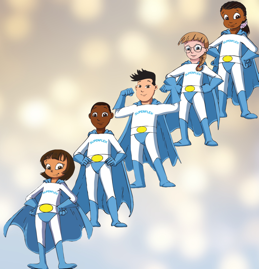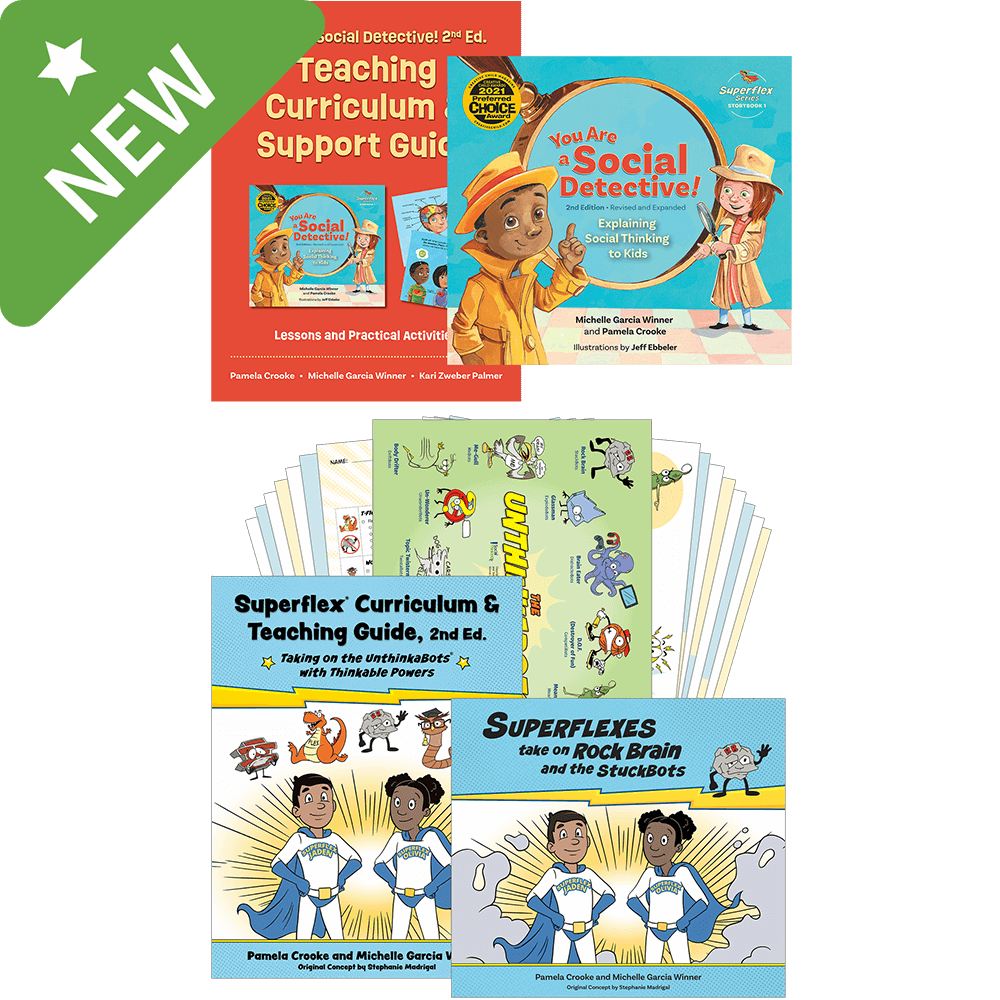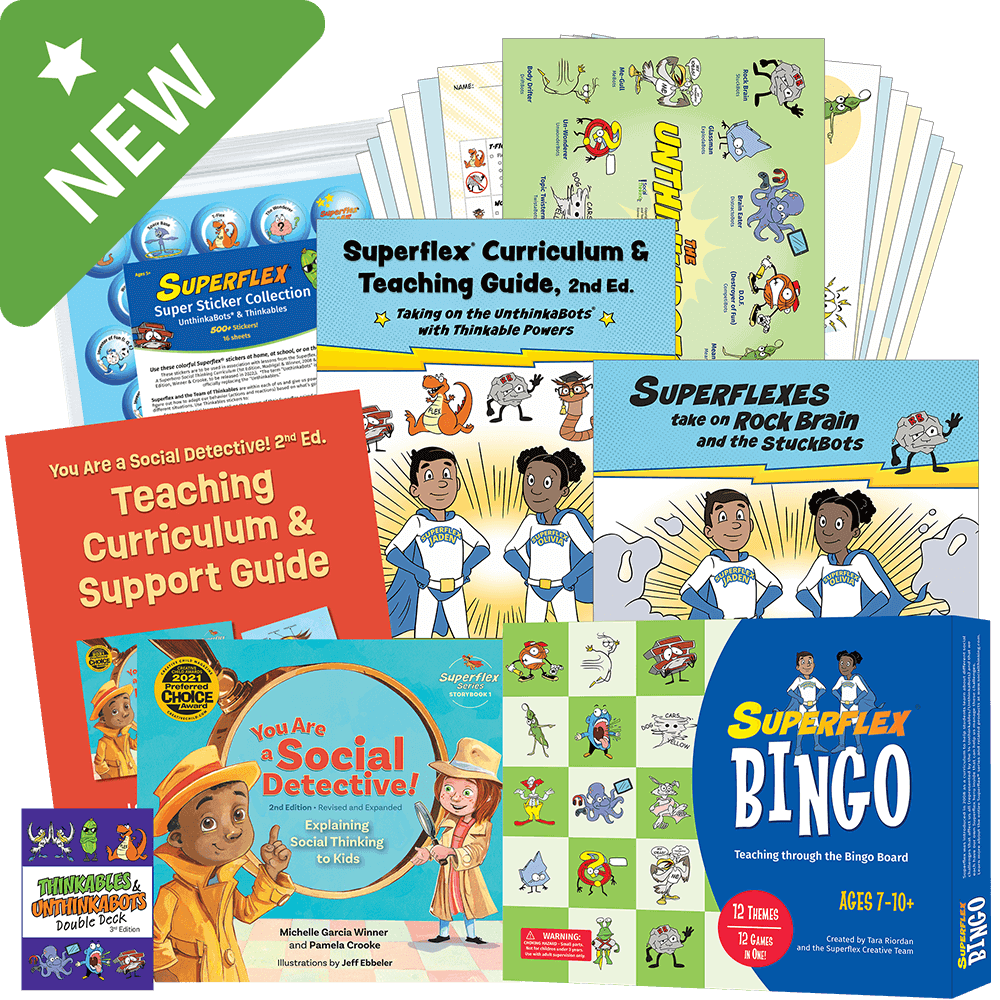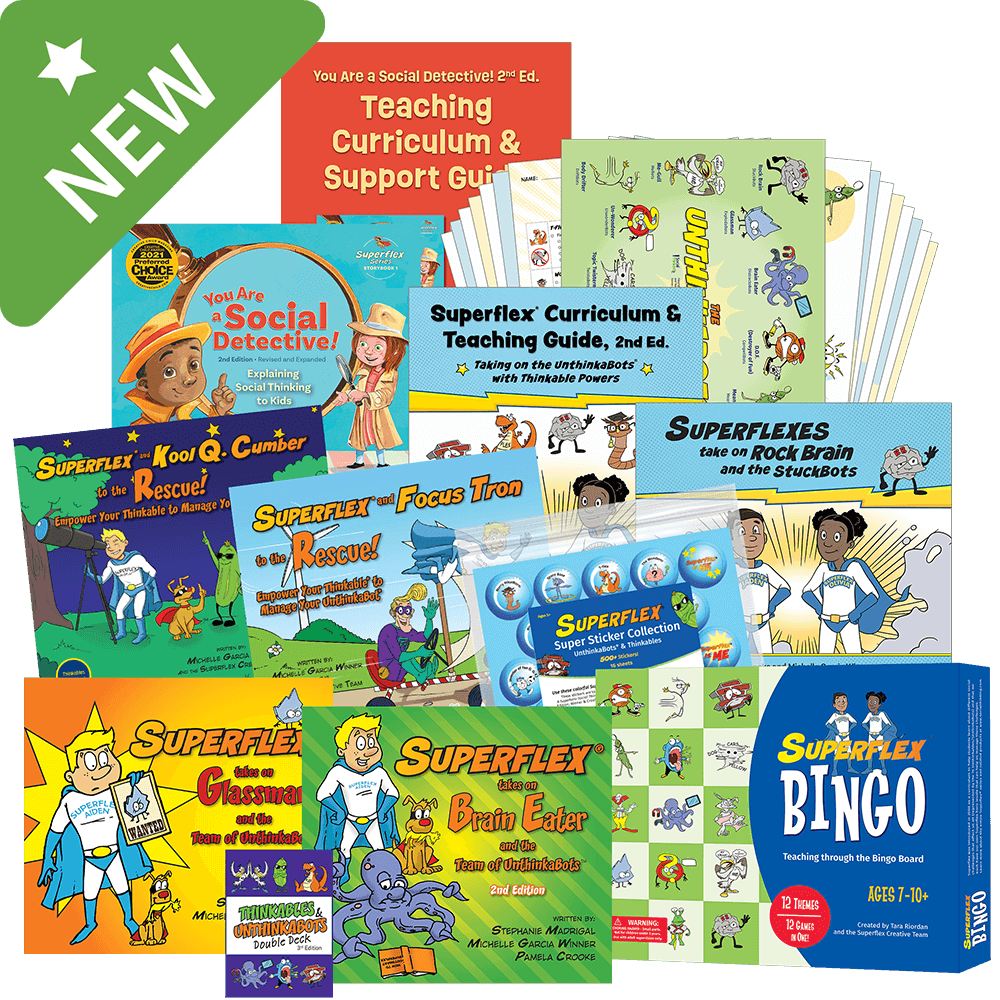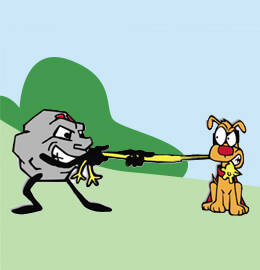Updated: December, 2023
© 2023 Think Social Publishing, Inc.
We have enjoyed hearing from so many people around the world about their love of the Social Detective, Superflex, UnthinkaBots, and Thinkables. Did you know that most of the characters were either co-developed, inspired, described, illustrated, and invented by neurodivergent clients and students over the years? In fact, a few years ago we asked kids to submit their ideas for Unthinkables/UnthinkaBots and they came up with over 500!
As with all products within the Social Thinking Methodology, the Detective/Superflex series is a work in progress. We continue to rely on our clients, who are neurodiverse, to help shape the way we teach and the materials we publish. We also rely on educators, clinicians, and parents to test and critically evaluate the products that eventually make it into classrooms and clinics. As you read the DOs and DON'Ts that follow, see how many align with your own experiences. If you’re new to using Detective/Superflex, this guide will hopefully help you teach using these tools with fidelity and compassion.
DO THIS |
NOT THIS |
|
| 1 |
DO start by teaching how to be a social OBSERVER (Social Detective) before introducing Superflex.
Start by teaching an awareness of one’s own and others’ words and actions. This means we always start by teaching through the lens of what the child observes first (their perspective).
TIP: Introduce social observation and socially based problem solving in You Are a Social Detective! This will help you teach information starting with basic Social Thinking Vocabulary and concepts. Use the Teaching guide to get ideas about how to roll out teaching in a systematic way. |
DON'T rush to teaching about Superflex and the UnthinkaBots.
We know kids want to launch into learning about the UnthinkaBots and Thinkables but learning core Social Thinking concepts is a slow and deep learning process.
If you skip teaching social observation first, you might find yourself slipping into old habits of "telling" students what they need to focus on rather than supporting them in figuring out their own social goals. The Superflex series is not about behavioral compliance. |
| 2 |
DO emphasize that Superflex isn't a comic book character. We are all Superflexes – Superflex is Me and Superflex is You!
CONSIDER THIS: We are asking students to playfully use their imaginations to pretend imaginary characters (UnthinkaBots and Thinkables) are in their brains. So, it's critical that kids understand that they don't literally have a rock in their brains or a Brain Eater octopus lurking in their heads! Not all students understand the difference between the real and the pretend world. If your student does not easily understand real vs. pretend, then please do not use these materials. The curriculum is written for kids who are 7-10 years old. |
DON'T use Superflex if students don't have a clear understanding of the difference between fantasy/pretend and reality. |
| 3 |
DO remind students that we ALL have UnthinkaBots and Thinkables. Empower kids to figure out their own team of UnthinkaBots and Thinkables. Students are much more motivated when participating in their learning.
TIP: Start by letting students know that YOU have your own UnthinkaBots team that you are working hard to manage with your Thinkable powers. Let them know that it's best to take on only one or two at a time. After all, that's all you can handle! |
DON'T use UNTHINKABOT terms to describe the child or person. NEVER say "You're being a Glassman" or "Stop being such a Rock Brain." |
| 4 |
DO link Superflex and the UnthinkaBots and Thinkables to academics and content standards.
TIP: What better way to encourage learning than to wrap something as motivating as Superflex and the UnthinkaBots and Thinkables into literature! State Standards focus on teaching—along with other easily connected targets—POINT of VIEW. You can use picture books, works of fiction, videos and real-life playground examples to have students figure out which Thinkables or UnthinkaBots are in the brains of the characters in a story. |
DON'T teach about the UnthinkaBot characters without teaching strategies to manage them! Strategies to manage UnthinkaBots are called Thinkable powers. |
| 5 |
DO use the Social Detective and Superflex strategies in both Tier 1 and Tier 2 settings. The strategies are for all kids and many schools have adopted the concepts into classrooms, school wide and district wide. |
DON'T use the Superflex curriculum with students who are just emerging into language (single words or short phrases) or are learning to talk about thoughts and thinking. WHY? Superflex, along with most concepts in the Social Thinking Methodology rely on metacognition (thinking about thinking) and social metacognition (thinking and talking about thoughts, thinking, and emotions). Please be mindful that the Social Thinking Methodology and Superflex are not a great match for all students. Let your common sense be your guide! |
| 6 |
DO be cautious of the developmental age for Superflex.
|
DON'T use Superflex concepts and strategies with preschoolers. Younger students typically lack the self-awareness and self-regulation to identify and manage UnthinkaBots. They may have fun learning the names of the characters. However, do not push children of this age to figure out how to manage UnthinkaBots. |
| 7 |
DO think of Superflex concepts within the scope of social, emotional and academic learning (SEAL) and Positive Behavioral Interventions and Supports (PBIS). |
DON'T turn Superflex concepts or UnthinkaBots into a behavior plan or teach in a behavioral or punitive way. Behavioral teaching can strip the thinking part of the process and encourages students to memorize social behaviors which is in opposition to how we encourage teaching. |
| 8 |
DO take plenty of time to teach from many different angles and in different settings. Consider that many of the UnthinkaBots and Thinkables can be included in PE, science, art, math and other subjects and environments. Be wary of trying to teach these complex concepts over a short period of time or only in one situation (e.g., therapy room).
It's okay to have summer camps or semester-long groups but be realistic in your expectations given the short period of time with limited exposure across a variety of situations and environments.
|
DON'T just rely on the storybook and posters. Make sure to use the curriculum. |
| 9 |
DO involve parents/caregivers and make sure everyone is on the same page. These curricula were never developed to cure, fix, stop, eliminate, or extinguish behaviors. They are to boost awareness, give strategies for social problem solving, and empower students to be proactive in the self-regulation needed to meet their own goals. |
DON'T let fun lessons become a way for kids to use violent vocabulary related to managing the UnthinkaBots (kill, destroy, mutilate, etc.).
STOP using if kids become obsessed with the UnthinkaBots, or SHIFT to teaching about Thinkables.
|
| 10 |
DO have fun and be creative! We've developed many fun characters in the form of 14 original Thinkables and UnthinkaBots, but there are so many more! Most importantly, have fun and encourage your children or students to develop their own characters. |
DON'T sell what you create! The names, images, and the materials are all copyright protected. That means you should not create new products or similar product to sell on sites like Teachers Pay Teachers. This is a copyright violation. |









